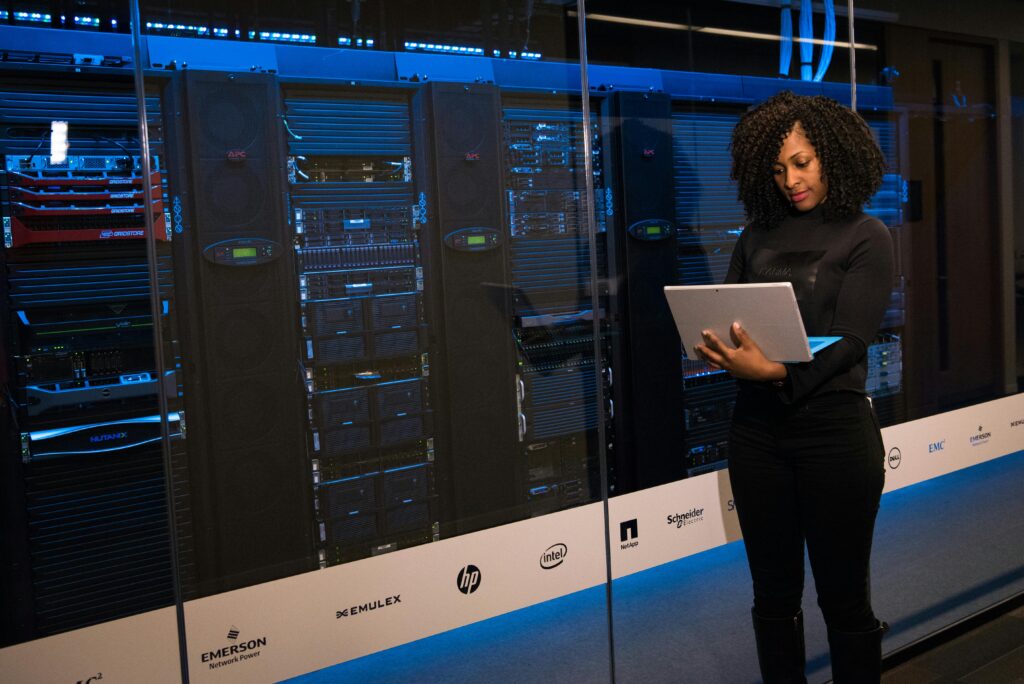In an age where digitalization is rapidly transforming the world, the role of data centers has become more crucial than ever. These power-packed facilities are the backbone of our digital existence, storing, processing, and distributing massive amounts of data every second. However, with the increasing digital demands comes the responsibility of ensuring these data centers operate sustainably. It involves minimizing their environmental impact and maximizing their efficiency and longevity.
Data center sustainability is a multifaceted concept that intertwines technology, energy efficiency, and environmental consciousness. It’s about creating and managing data centers in a way that they leave minimal carbon footprint, consume less energy, and yet deliver high performance. This blog will delve into what makes a data center sustainable, why it’s essential in today’s digital age, and the key components that constitute a genuinely sustainable data center.
Environmental Impact
Data centers are significant energy consumers, powering up servers, cooling systems, and backup equipment around the clock. This constant energy consumption produces high carbon emissions, contributing to environmental degradation. The challenge lies in managing this energy consumption effectively. The goal is to reduce energy use without compromising the efficiency and reliability of data services. This is where sustainability comes into play.
The first step towards reducing the environmental impact of data centers is integrating renewable energy sources. Solar and wind power can significantly decrease reliance on fossil fuels, thus lowering carbon emissions. In addition, employing energy-efficient technologies such as advanced power management systems can further optimize energy usage. Smart grids, for instance, can regulate power distribution, ensuring maximum energy utilization. These strategies can make data centers more environmentally friendly and sustainable.
Designing Green Data Centers
Designing green data centers involves careful consideration of architecture and layout. Efficient space utilization can enhance airflow, minimizing heat buildup and reducing the need for extensive cooling. Also, using energy-efficient building materials can contribute to overall sustainability. Green design principles lessen the environmental footprint of data centers and enhance their operational efficiency.
Cooling system innovations are a crucial aspect of green data center design. Traditional air conditioning systems consume much energy, adding to operational costs and carbon footprints. However, newer technologies like liquid cooling solutions offer greater efficiency. Natural cooling methods that leverage ambient environmental conditions, such as free cooling, can also significantly reduce energy consumption. These innovative solutions can help data centers operate sustainably while maintaining optimal performance.
Sustainable Hardware
Sustainable hardware is a crucial component of green data centers. Eco-friendly server technologies are designed to provide high performance while consuming less power. Such technologies reduce energy costs and minimize the environmental impact of data center operations. It’s a win-win situation where data centers can enjoy cost savings while contributing to environmental conservation.
Another critical aspect of sustainable hardware is recycling and upcycling electronic components. Data centers can reduce e-waste and conserve resources by reusing old servers and other equipment. This practice not only lowers these facilities’ environmental footprint but also helps create a circular economy within the tech industry. It’s a sustainable approach that benefits both the environment and the economy.
Cost-Benefit Analysis
Investing in sustainable data centers might require a higher initial investment than traditional ones. However, the long-term savings can be substantial, thanks to lower operational costs. Energy-efficient technologies and renewable energy sources can drastically cut down on energy expenses. Moreover, with growing consumer awareness about environmental issues, having a sustainable data center could enhance a company’s reputation, potentially attracting more clients.
The economic viability of sustainable practices in data centers is becoming increasingly recognized. Companies are realizing that going green is good for the environment and their bottom line. The adoption of sustainable data centers is likely to grow as more businesses recognize these practices’ financial and reputational benefits. In the end, sustainability is not just about preserving the environment; it’s also about ensuring data centers’ economic viability and longevity.
Summary
Embracing sustainability in data centers is no longer an option but a necessity. The environmental impact of these facilities is significant, and the need for change is urgent. However, the journey towards sustainable data centers is a collaborative venture. It requires collective action from all stakeholders – designers, operators, hardware manufacturers, and end-users.
The importance of collective action cannot be overstated. As we have seen, designing green data centers, employing sustainable hardware, and conducting cost-benefit analyses are all parts of a larger puzzle. Everyone has a role to play in this transition. With concerted efforts, we can create data centers that are efficient, reliable, and kind to our planet. Let’s shift towards sustainable data centers – for the good of our businesses, communities, and world.





